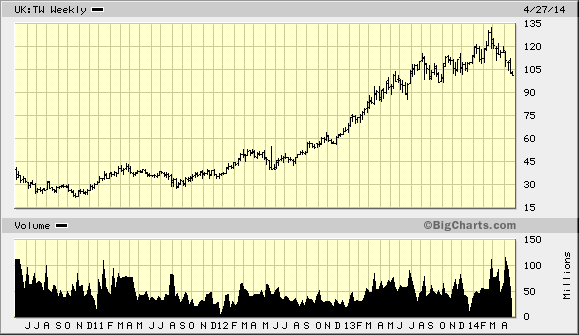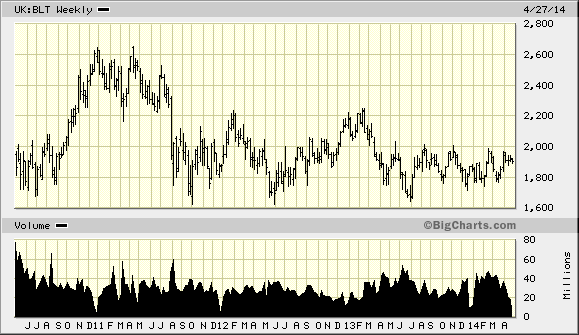“I can make 15 or 20% a year – anyone can do that,” a friend told me rather dismissively at the weekend. We were on a long car journey from Wales back to London. “What I want to do is double it over the next 12 months.”
“How are you going to do that?” I asked.
He thought for a moment about whether to tell us his fantastic scheme.
Then he began.
Ideas are all very well, but you need to put them into practice
“You’ve heard of buy-to-let? My idea,” my friend said proudly, “is buy-to-Airbnb.”
Despite the not-so-catchy name, the idea has plenty going for it. Property prices may be rising pretty much the world over, but rents – which tend to stay in line with earnings – are not. The result is that in desirable city locations property yields are, to put it bluntly, pants.
The most extreme case is London. Estate agent Knight Frank, for example, has reported that gross rental yield is now 2.8% – the lowest since they began keeping records in 1995.
It doesn’t make much difference if your yield is 3% or 5% or 7% when the underlying property is appreciating at 10% or 15% a year, of course, but that sort of appreciation does not last forever. I must say I like the concept of ‘buy-to-airbnb’ to improve yields (Airbnb, in case you didn’t know, is a website that allows you to rent out your property as a holiday home) but managing the property could become a chore.
The problem with my friend’s idea is that it is just that – it’s an idea. Somebody’s actually got to go out and do it (a much harder undertaking altogether). So while they’re doing that, let’s consider some five of the other ideas that came up.
1. Buy Ukraine
This is a classic contrarian play. The risks are obvious and do not need explaining. One way to play it is to buy the Ukrainian currency, the hryvnia. My preferred route is the Ukrainian stock market. But guess what? There’s no exchange-traded fund (ETF).
There are ETFs that cover just about every asset class you could ever imagine – but not the Ukrainian stock market. If you don’t have the time to start up your Ukrainian stock market ETF – and many of us don’t – you could consider foreign-listed companies that operate there.
I figured telecoms and media made more sense than natural resource companies (Ukraine has plenty), which are more dependent on international prices. I did some digging and came up with the following. All are beaten up and ripe for a rebound.
Mobile TeleSystems (NYSE: MBT) – this company does mobile telecoms in Russia, Ukraine, Uzbekistan and Turkmenistan, with 25% of net income coming from Ukraine. Vimpel Communications (Nasdaq: VIP) operates in Russia, Ukraine, Kazakhstan, Uzbekistan and Tajikistan. Finally, Central European Media Enterprises Ltd (Nasdaq: CETV) operates TV stations in central Europe, among them Studio 1+1, KINO, and CITI in Ukraine.
2. Sell builders
For all the furore surrounding the property market in the UK and, in particular, London, the major builders have sold off. With most suffering 20% falls from their peaks, they are now in bear market territory and, in some cases, support has broken. Where the builders go, the property market tends to follow.
Taylor Wimpey (LSE:TW) looks the worst to me. It’s already below its one-year moving average. Here’s a chart that could easily halve.

Source: BigCharts.com
Short it via a spread bet, a contract for difference (CFD), or long-dated puts. These are all leveraged ways to trade, and using leverage is always risky – so make sure you know what you’re doing and exactly how much you’re risking if you decide to attempt this trade.
3. Buy commodities
More specifically, buy BHP Billiton (LSE: BLT). BHP is a real company that makes real money producing real things. It didn’t sell off as badly as the other miners (probably thanks to its oil and coal revenues).
I always keep my eye on what the price is doing – except that the share price has been so boring of late that even I, one of its admirers, have stopped and gone to sleep. For three years it’s been going nowhere. Support at 1,600p, resistance at 2,200p, as you can see on the chart below.

Source: BigCharts.com
But you know what they say – ‘the bigger the base, the higher in space’. It’s starting to creep up with higher and higher lows. However, if you want to double your money in BHP, you’re going to have to find a way of levering the bet. It might be through options, or it might be via spread betting – but if BHP gets going, it’ll take the other miners with it – and smaller mining companies really can double when the sector gets going. Again, if you use leverage, make sure you understand and are prepared for your worst-case scenario.
4. Gold miners
Who would ever want to touch a gold miner again after 2013? It’s another contrarian bet. But despite the flat gold price, some life is returning to the sector.
Corporate behaviour has improved a little, costs have been lowered, and the idea of merger and acquisition has returned. Newmont and Barrick were in discussion last week. Canadian miner, Osisko – not a cheap producer by any means – became the subject of a bidding war.
The indications are that the smart money might be returning, while the BS-merchants at the lower end are moving into the more fashionable bitcoin and medical marijuana scenes.
The explorers’ ETF, for example, could easily double from its current price and still be below its 2012 lows – which gives you an idea how beaten up the sector has become. To reclaim the 2011 highs you’re talking multiples of as much as five times.
5. Short biotech
If you want an ugly chart, look no further than the leveraged short biotech ETFs. The biotech sector has been exceptionally popular in recent years, and these trade in the opposite direction – and with leverage. Levered ETFs can crucify you if you hold them too long on the wrong side of the market, but if the biotech sector is a bubble that has now popped, then shorting biotech with leverage might be the way to go.
On the other hand, so many people are calling biotech a bubble, you wonder if the contrarian play here is to actually be long.
None of these ideas is for the inexperienced or for the faint hearted, I should say. The reality of ‘looking for doubles’ is usually that shirts get lost. When all is said and done, the call is all about getting the broader direction of the sector right.
Other areas I like the look of at present, by the way, but which I didn’t have space to mention here are: consumer staples in emerging markets; palladium; and oil. With the sugar price rising and governments clamping down on sweet food, sugary stocks could be due a sell as well.
What do you think? By all means post your own ideas in the comments section.
• Dominic Frisby’s latest book, Bitcoin – the Future of Money will be available soon. His first book, Life After The State, is available at Amazon. An audiobook version is available here.
Spread betting is not suitable for everyone – ensure you fully understand the risks involved and never risk more than you can afford to lose. Trades carry a high level of risk to your capital. Prices can move rapidly against you and resulting losses may be more than your original stake or deposit.
Category: Market updates

